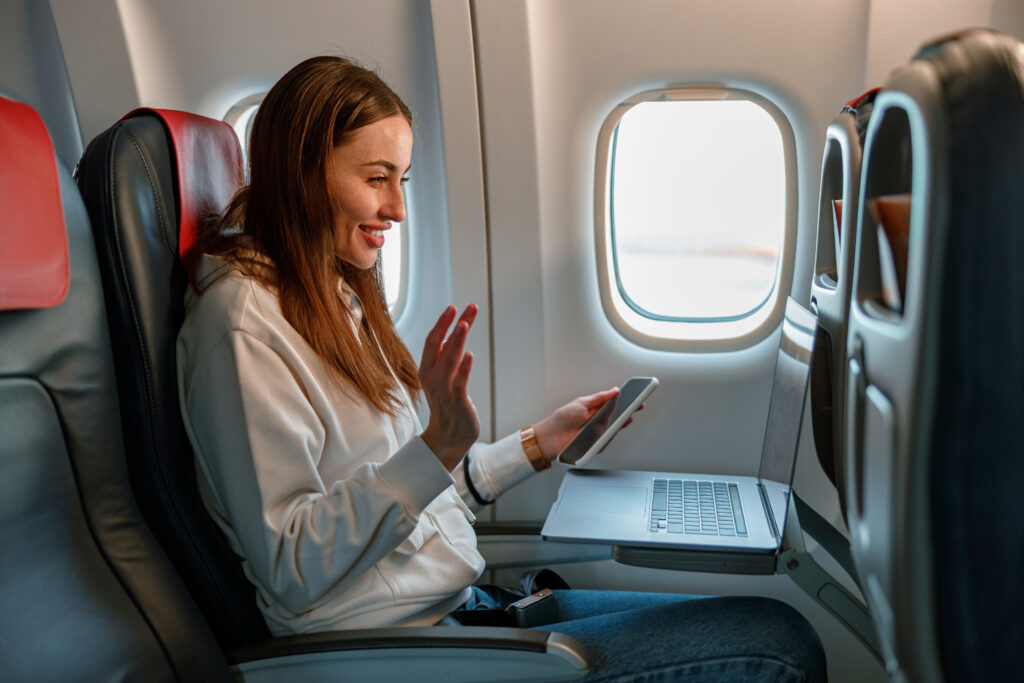A new US DOT final rule that requires airlines to proactively issue refunds to passengers who pay for inflight Wi-Fi but don’t receive the service took effect on 25 June as part of sweeping new consumer protections spearheaded by the Biden-Harris Administration.
Whilst the rule requires automatic refunds to consumers when a US or foreign carrier cancels or makes a significant change to a scheduled flight to, from, or within the US (and the consumer is not offered or rejects alternative transportation and travel credits, vouchers, or other compensation), it also requires refunds to consumers for fees covering ancillaries, such as Wi-Fi, and indeed for checked baggage fees if the bag is significantly delayed.
Notably, airlines are now required to issue refunds even if Wi-Fi is available for only a portion of the flight. The DOT’s wording states: “The Department does consider partial service such as providing Wi-Fi service for only a portion of the flight when a consumer paid for Wi-Fi service to entitle a consumer to a refund.”
Regarding refunds of fees for services ‘that the passenger does not receive’, the DOT interprets this to mean that a carrier has failed to fulfill its obligation to provide the service, as opposed to the quality of the purchased ancillary service not being up to the expectation of the passengers.
Pertinent to third-party inflight connectivity providers, the DOT clarified that air travel ancillaries pursuant to a contract between passengers and an independent third-party provider that does not act as an agent or contractor of an airline “are not covered by this refund requirement”.
But outside of waiting to learn of a passenger’s complaint, how can airlines ascertain if they have fulfilled their obligation to provide the service? This new Wi-Fi refund requirement also raises the question — what is the Wi-Fi availability threshold that triggers the refund? No guidelines were provided for setting a ‘service availability’ threshold.
For more than two decades, NetForecast has provided Wi-Fi performance measurements for terrestrial and mobile Internet services including for customers like Comcast. And for the last four years, it has been monitoring the passenger experience for inflight Wi-Fi, including measuring and reporting on the percentage of each flight a passenger is able to access the Internet. Based on its experience, the firm believes it is uniquely positioned to help airlines formulate guidelines for setting a “fair and reasonable” threshold for Wi-Fi service availability; and then provide precise data about availability so that airlines can proactively issue refunds if necessary.
How does it work?
Quality of Service (QoS) is a common measurement for performance of a connection. But whilst NetForecast measures QoS, it also measures and assesses network performance at the user level, effectively measuring the actual passenger experience in the seat – or the final 10 meters, if you will. As such, NetForecast can work with airlines “to set the threshold of what is acceptable”, NetForecast president Rebecca Wetzel explained to Runway Girl Network during a sit-down interview at the Aircraft Interiors Expo in Hamburg, where the firm was meeting with airlines about its solution.
“It is important that Wi-Fi service availability be measured from user devices because measurements taken within the network cannot reflect what the passenger is actually experiencing. To help airlines comply with the new rule, we provide airlines with seat-level Wi-Fi availability data by flight so fees can be proactively refunded,” suggested Wetzel.
Even before the DOT rule went into effect, it made sense for airlines to be armed with this sort of granular data, as it enables them to, for example, track dead spots on certain flight paths to anticipate them and to course-correct, ensuring that passengers are connected. But now it seems clear that a threshold should in fact be set by any airline that serves the US market and charges for inflight Wi-Fi. Naturally, this information would need to be imparted clearly at the time of payment.
As frequent flyers are all too aware, inflight connectivity outages and dead zones are not uncommon, especially on certain over-water international flights. “One of the things that we’re finding monitoring thousands of flights is that almost every flight has a period of time during which there’s a service interruption, and what we do is we measure the percentage of a flight that has a service interruption and we factor that into our QoE in addition to the actual latency loss and bandwidth. That’s also important,” said Wetzel.
“So, when you’re connected it can be very, very good. But if there are disruptions, then that needs to be factored in and as far as we know, we’re the only ones who are measuring that, factoring it in, and then setting thresholds for what is the percentage of the flight where you cannot be connected.”
If the threshold is a percentage figure, then the passenger would receive a refund if they were disconnected for that percent of time or more — again, if clearly stipulated from the outset.
Knowing who’s connected, who’s paid, and who had a problem connecting would enable airlines to issue prompt refunds to passengers even before they complain.
Meanwhile, it remains to be seen if the DOT’s final rule on Wi-Fi availability and refunds will encourage even more carriers to pursue a free Wi-Fi model. But even in instances where Wi-Fi is free, the airline has made a commitment to offer a service. If it is not delivering on it, how might that be interpreted in time?
Related Articles:


